(3 minute read)
World Book Day is a fabulous day for inspiring a passion for all things reading and books! Of course, here at Teach Your Monster, we’re very passionate about reading, from Teach Your Monster to Read - our game which teaches the building blocks of reading - phonics, all the way through to Teach Your Monster Reading For Fun - our ‘reading for pleasure’ game. We thought World Book Day would be a great opportunity to tell you all about the books in Teach Your Monster Reading For Fun, why we choose them and why we love them so much!
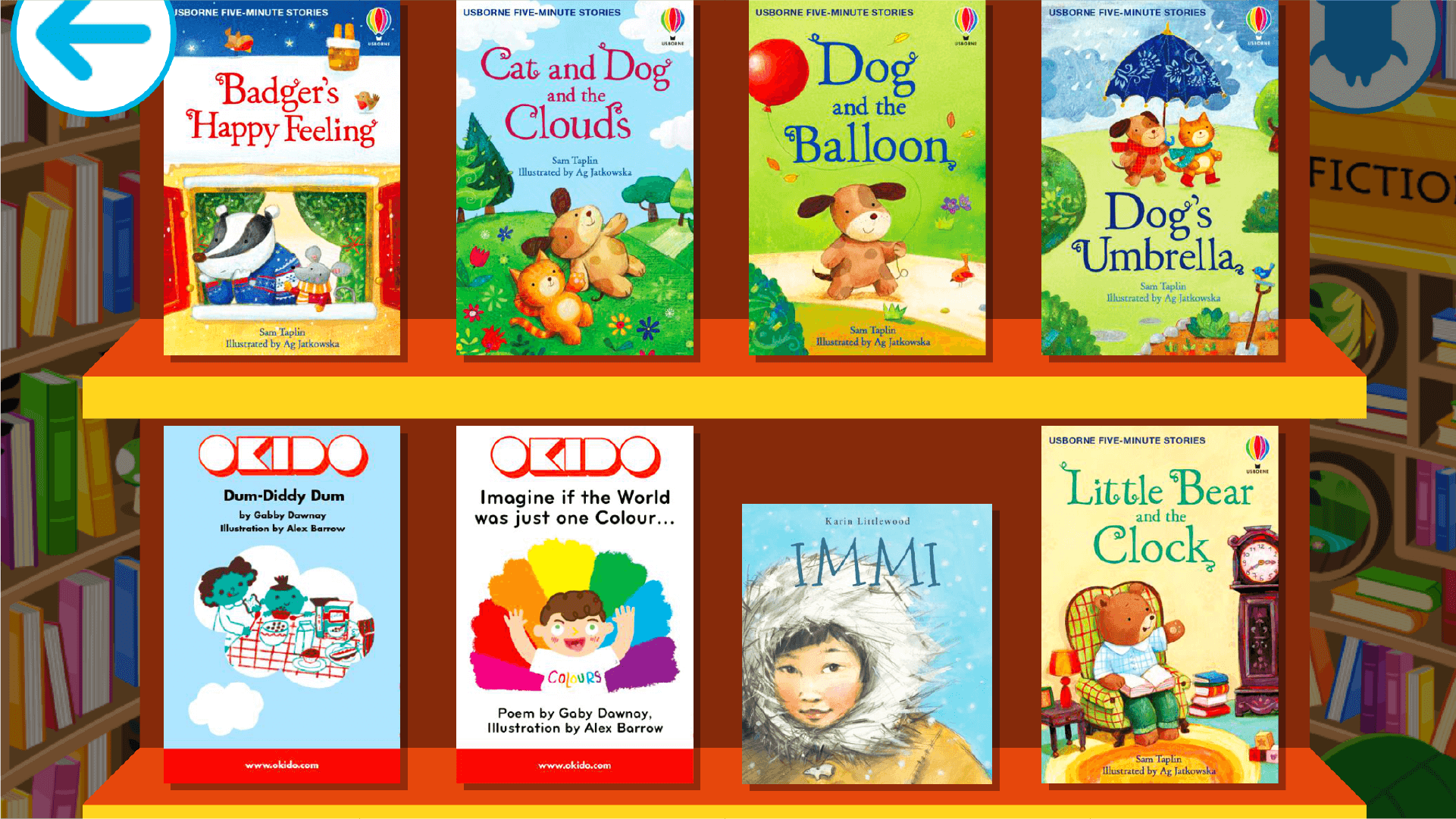
Reading for Fun has a library of over 70 books. Al, our Product Manager for Reading for Fun says that the books in the game are a fantastic way to introduce kids to a variety of texts, in a casual, fun way.
"I’ll avoid being self-indulgent and suggesting you read my very own Teach Your Monster: Football Quiz book, as football and quizzes may not even be your thing! Besides, there are plenty of other top reads in a wonderful collection of free books!"
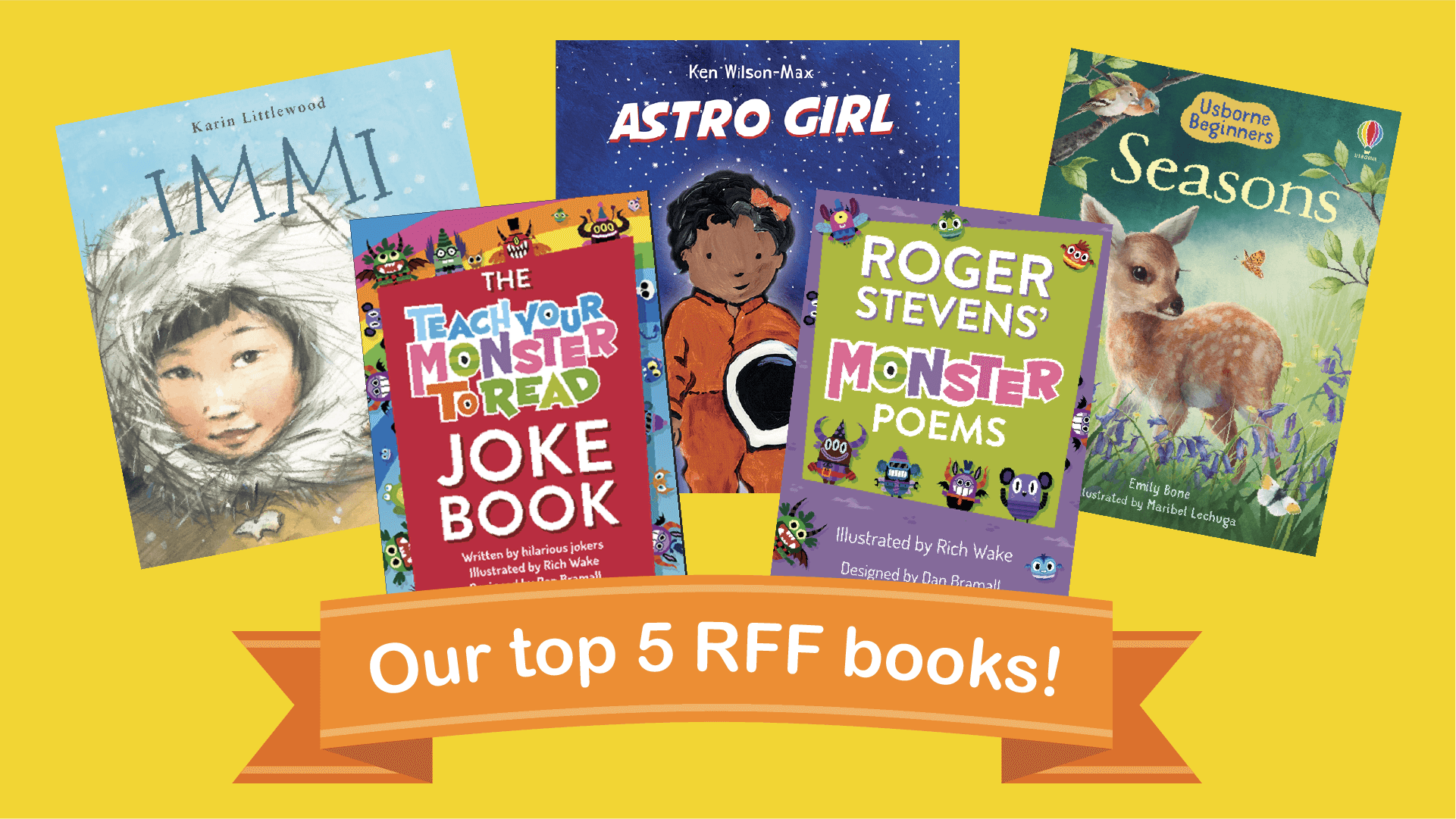
Here’s Al’s top 5 Reading for Fun books:
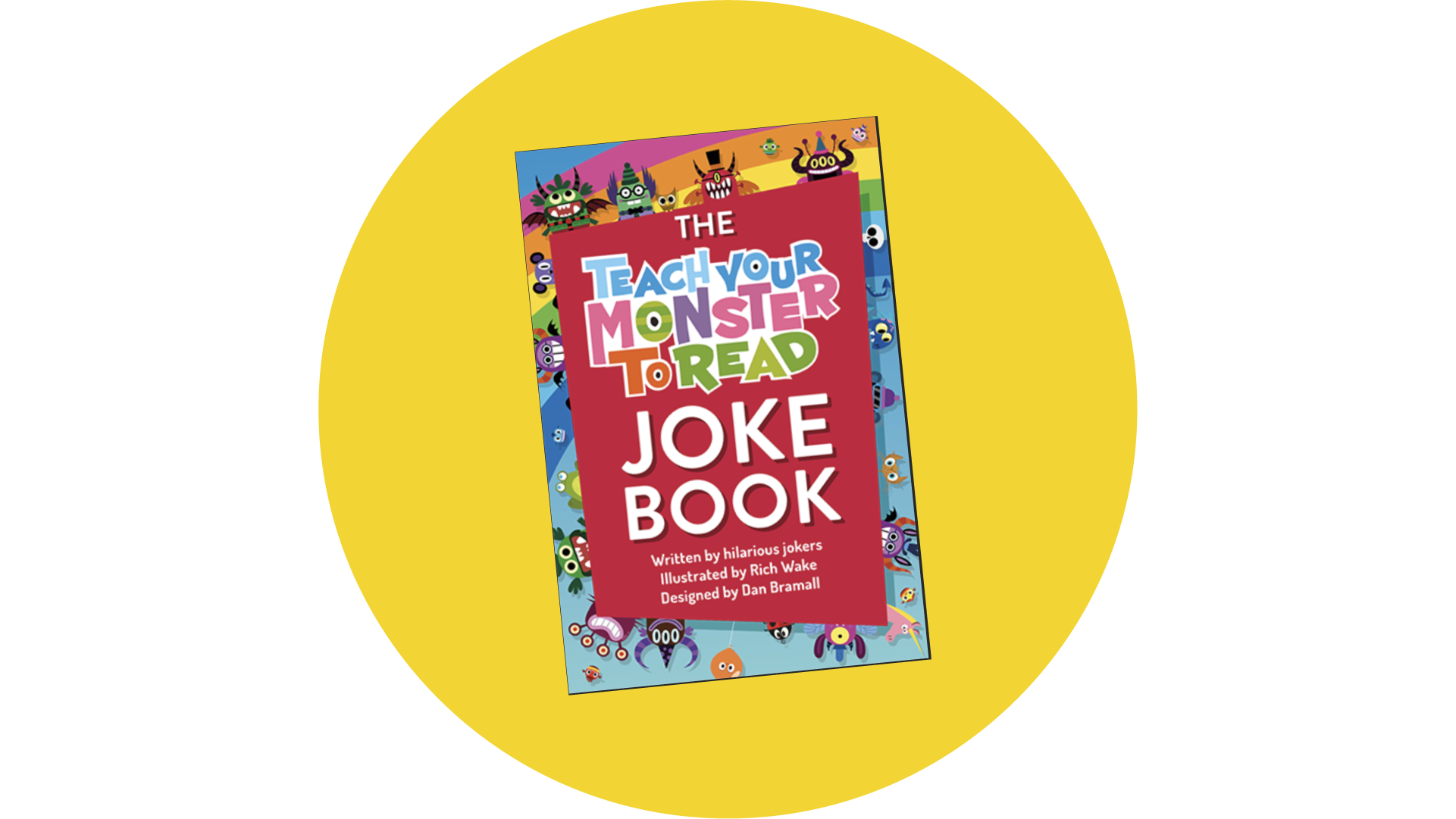
Book 1: Teach Your Monster Joke Book
What is it about? I was trying to think of something witty to say here, but nothing can top the wise little gags in this corker of a book.
Who wrote it? A bunch of hilarious jokers. And it was illustrated by the very talented Rich Wake!
Who would like it? Anyone with a sense of humour?!
Why would you want to read it? Sometimes it’s nice to just pick up a book and have a flick through. It’s great for one-liners that you keep in your back-pocket for unsuspecting friends!

Book 2: Roger Stevens’ Monster Poems
What is it about? Roger has given us some amazing poems in this gem.
Who wrote it? Roger Stevens
Who would like it? Anyone who likes rhyme, monsters, or plays Reading for Fun!
Why would you want to read it? You’ll definitely want to read this as you play the Reading for Fun game. The poems are woven in with the game world - which brings everything to life!
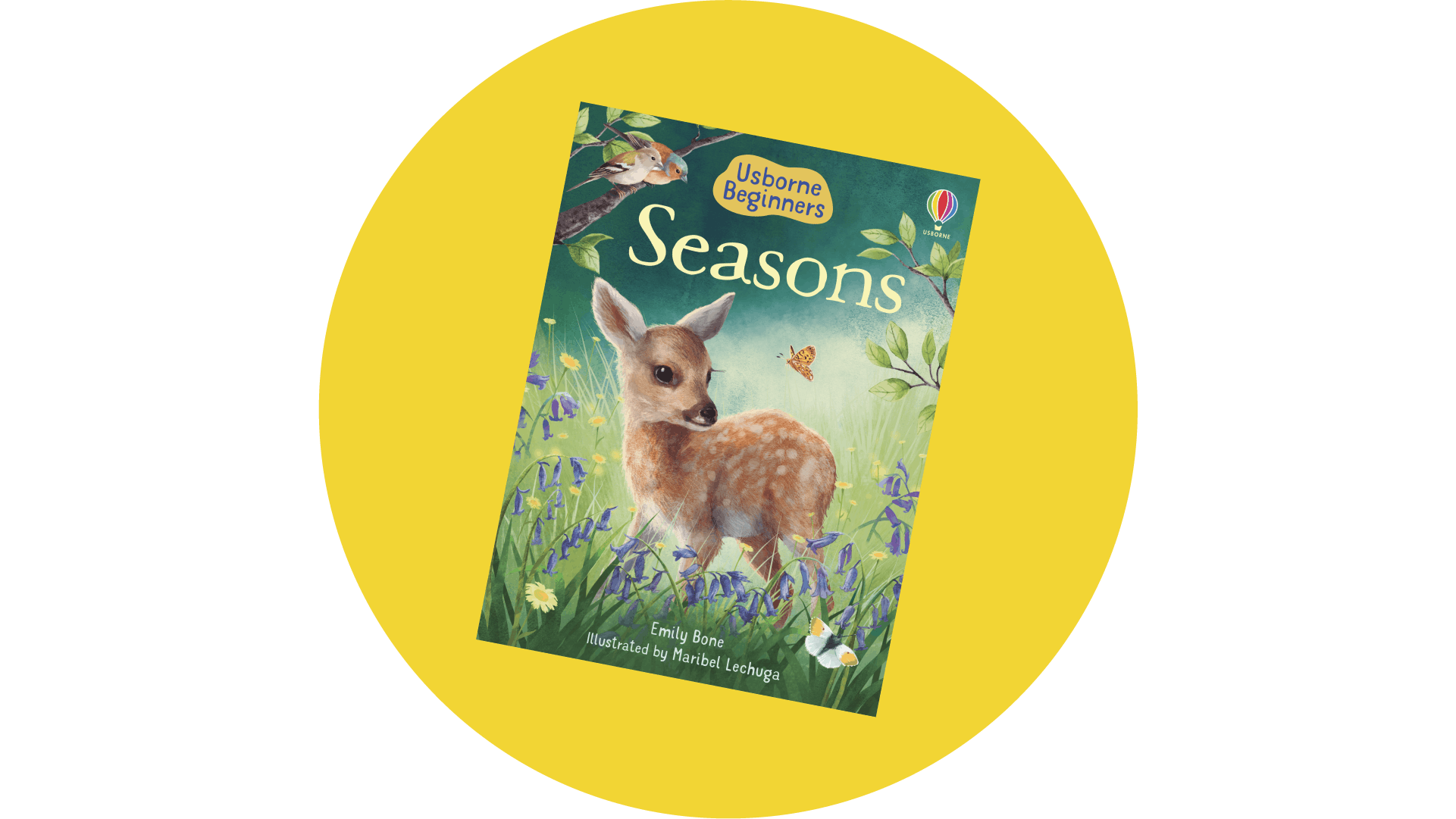
Book 3: Seasons
What is it about? It’s a look through the changing seasons. Sit back and read about baby animals, snowy winters and the changing wildlife.
Who wrote it? Emily Bone
Who would like it? Anyone who wants to learn more about the seasons.
Why would you want to read it? To have a mindful moment with nature.
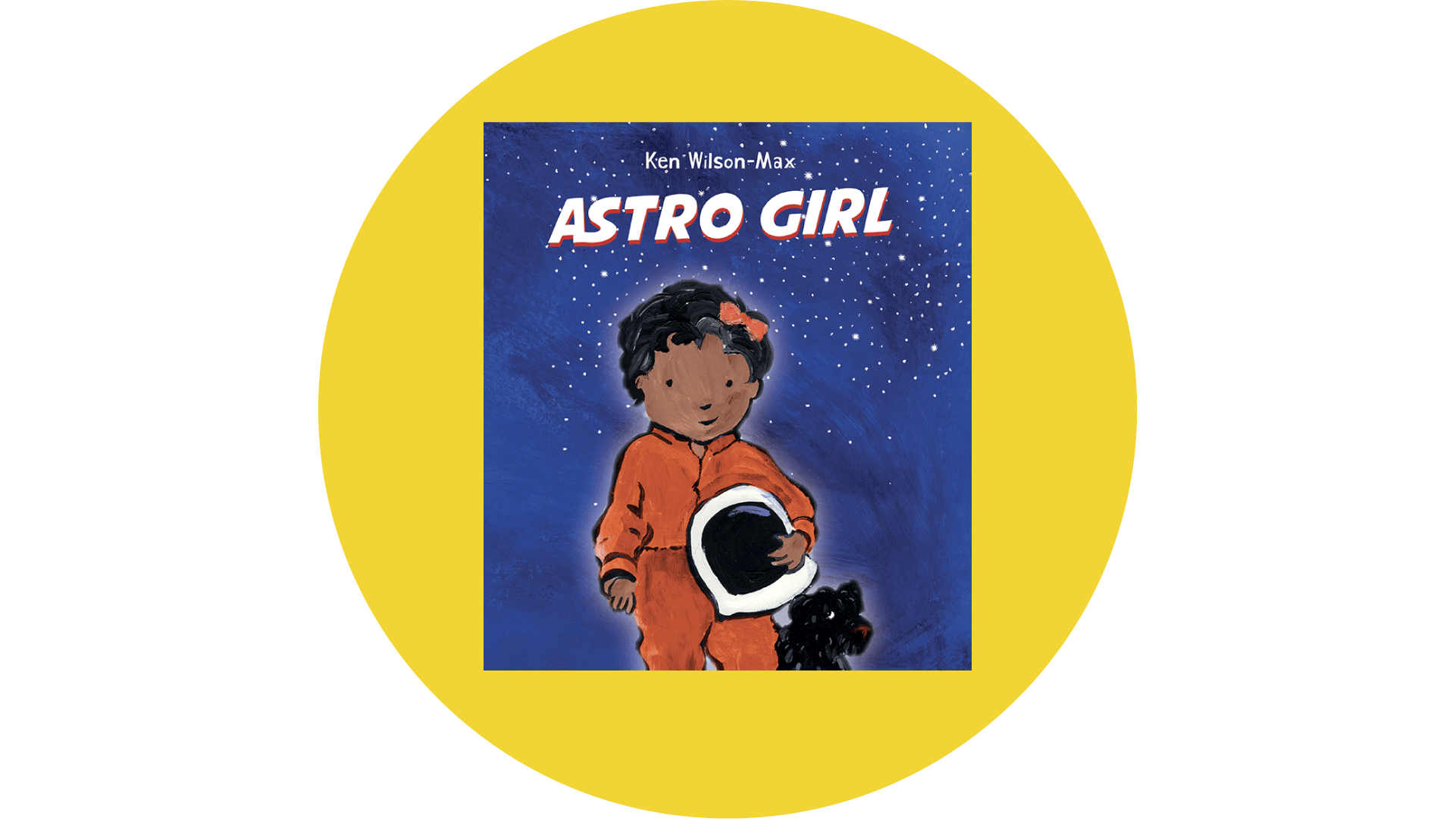
Book 4: Astro Girl
What is it about? It’s about a girl, Astrid, who plays with her dad at home, thinking about all the adventures she can have in space! No spoilers, but it has a great ending with Astrid’s mum.
Who wrote it? Ken Wilson-Max
Who would like it? Anyone who loves space!
Why would you want to read it? This book is a great family read! A playful bedtime story with lots of positive messages.

Book 5: Immi
What is it about? It’s about a young girl called Immi who discovers beautiful new things to decorate her igloo with.
Who wrote it? Karin Littlewood
Who would like it? Anyone who wants to get lost in another world for a moment.
Why would you want to read it? To snuggle up with a story about being creative, using your imagination and making meaningful connections
------

Alex Goss
Teach Your Monster to Read and Reading for Fun Product Manager
(4 minute read)
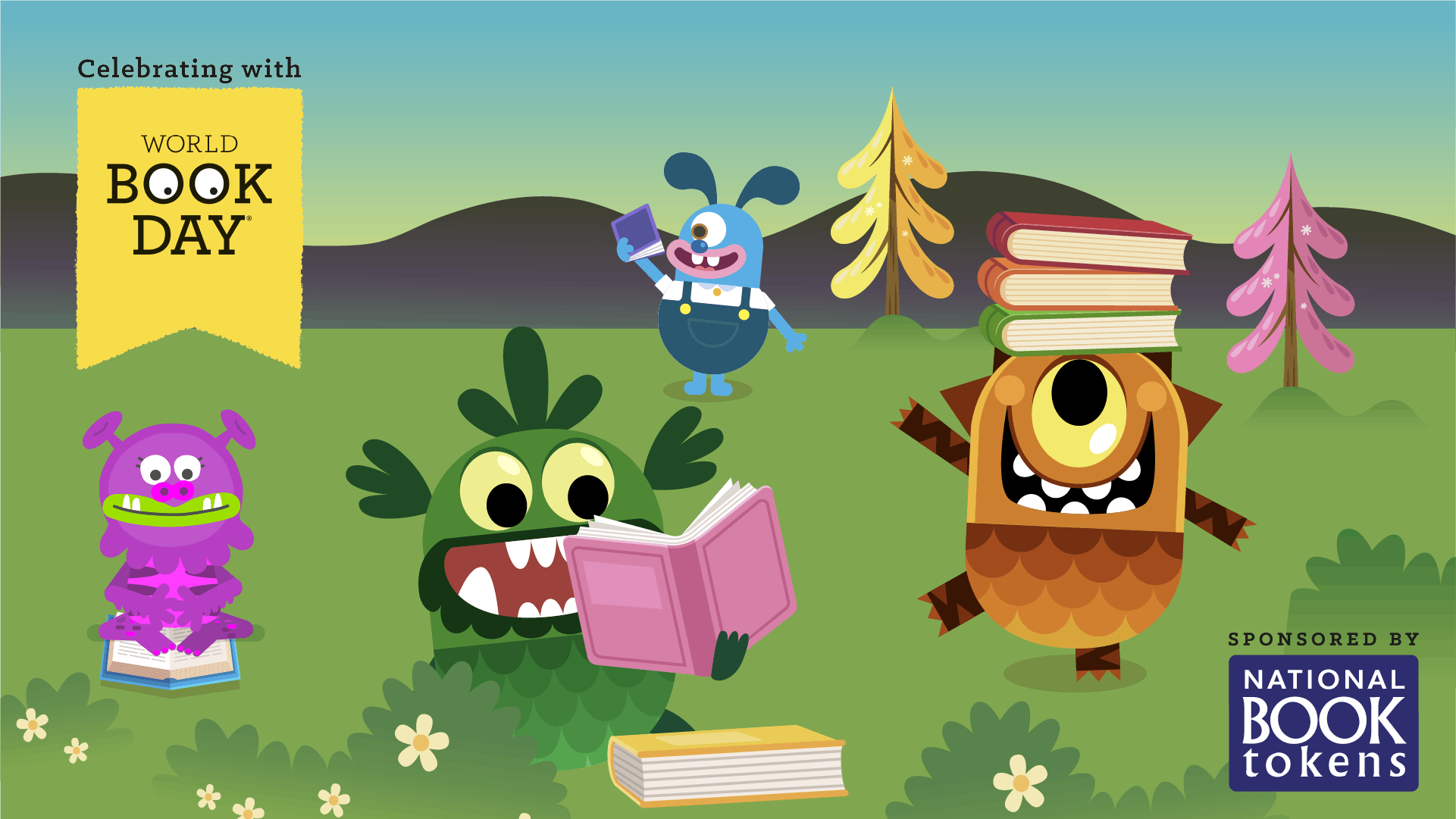
World Book Day is a charity whose mission is to encourage all children to love reading for pleasure. An annual celebration of authors, illustrators, books and the joy of reading, this year's World Book Day will be taking place on Thursday 7 March 2024. But is it just a chance for many kids to go to school dressed up as Spiderman? Does World Book Day really have an impact on reading? These are the important questions!
As an ex-Primary school teacher, I remember World Book Day fondly and how excited the kids got at being dressed up and having the tokens ready to spend at the pop-up book store in the downstairs hall! I think it provides a strong way to embed a love of reading at an early age, and provides an excellent opportunity for teachers to really hound the point about reading for pleasure and autonomy when it comes to book choice - something that I never quite got in my own learning back in the 80s/90s! I love books now of course, and reading to the little ones was always a great joy in being a teacher.
More studiously however, The Literacy Trust did a comprehensive report on the impact of World Book Day, which found that it helps children in two ways: aiding all children to become book owners, many for the first time, and by supporting a variety of activities and experiences essential for building life-long readers.
----
With all the book tokens given out on the day, children can get their £1 World Book Day book for free with their token, so it really can help ALL children get access to physical books. We asked our team which books they would love to give away this World Book Day:
TYM team Book recommendations:
“I'd go for a picture book The Stinky Cheese Man and Other Fairly Stupid Tales by Jon Scieszka and Lane Smith. It's all the tales you know but with a very silly twist and all the tales come crashing together in one chaotic conclusion. Great illustrations and design too. See also The True Story of the Three Little Pigs by the same author.” Darren, Creative Director.
“Mr Gum books are the best books” Matt, Game Developer.
“What do people do all day by Richard Scarry.” Leo, Number Skills Product Manager
“Don’t worry little Crab and the other books in the series by Chris Haughton.” Mor, UX Lead
Remember that there are over 70 books in our reading app Teach Your Monster Reading for Fun too!
-----
On World Book Day, teachers can look to the World Book day website for fun ideas and activities, or use the day to celebrate a book they’ve already been reading in class. They may also dress up as a book character themselves - bringing great joy and a giggle to their pupils! To the parents out there, we know that it can be tricky to put together a decent outfit for World Book Day so here are some of our team’s Top Tips!
Kid’s dressing up - our TYM top tips
“Hang on to everything you have in a dressing up box. You'll be surprised what you can pull together in an emergency with a flat cap and fake beard.” Darren, Creative Director.
“I remember dressing up as the Snow Queen for world book day many moons ago. My Mum made me this amazing spangly cape with fake icicles and we made a tin foil spiky crown. Great book that!” Alice, Designer.
“Anything can be made with a big enough cereal box - why not cut a head hole in one side and paint the box to look like a book? Then you can put any title on there, with a few simple touches and recycle it year on year (with a different name)” Kay, Freelance Designer.
We have also made these Teach Your Monster to Read printable masks and Reading for Fun printable masks as a free download!
We really hope you have an amazing World Book Day this March 7th and we hope to see some little monsters popping up in your local school!
Kay Leathers,
Ex-Primary Teacher and Freelancer
(4 minute read)
Did you grow up in the eighties and nineties? Have you been helping out with your child's homework? Does the modern math that children learn seem potentially bewildering? We have some answers.
Despite its name, New Math isn’t a new concept. Originating in the 1950s and 1960s, New Mathematics was a fresh approach to mathematics teaching, widely adopted by educators in the US and some parts of Western Europe. The main aim of New Math was to revamp the U.S. mathematics curriculum in response to the demands of the space race, technological advancements, and the pressures of the Cold War.
Instead of adopting a ‘learning by rote’ approach to simply teaching children formulas and rules they should rigidly follow, New Math was designed to equip learners with problem-solving skills and an ability to apply mathematical concepts to real-world problems. Today New Math simply means updating learning practices to equip students with the skills to not only find the right answers to mathematical problems, but also understand how and why they were able to solve the problems.

Why Parents Are Struggling With New Math
The way mathematics is taught has constantly evolved especially since the early reforms of the mid-20th Century. For parents, especially those born in the 80s and 90s, there are significant differences to how they were taught.
Instead of just learning how to do something, like multiply or divide, students are encouraged to understand why these operations work the way they do. This might involve more discussion about the principles behind mathematical operations, rather than just memorizing times tables or formulas.
New Math places a greater emphasis on problem-solving skills — students are encouraged to think critically about how to approach a problem, consider different methods, and understand that there might be multiple ways to find a solution. This sits in stark contrast to the ways many of today's parents were taught where there was one way only to find the right answer. But it's important to understand that this new approach isn't just about getting the right answer — it's about understanding mathematical concepts behind getting an answer and being able to apply them in different contexts.
The Downsides To New Math
While there are obvious pros to learning critical thinking and problem-solving skills, there are some cons.
Radical changes in learning have created a divide between children and parents who are struggling to support their children with homework. During the global pandemic, where many parents suddenly become home educators, the gap between methods taught 30-40 years ago and those taught today became glaringly obvious.
Another key issue is that New Math uses word-based problems to expand on mathematical concepts. Word problems require a certain level of reading comprehension, where students must be able to read, understand, and interpret the text of the problem before they can begin to solve the mathematical nature of the question. For students with reading difficulties, this can be a significant barrier to math learning.

How Parents Can Embrace New Math
Incorporating New Math methods into daily life in a playful way is actually quite easy. It can be a great way for parents to reinforce what their children are learning in school, and also begin to grasp the concept themselves.
- Shopping trips are a perfect opportunity to practice math skills. Ask your child to help you calculate the total cost of items, figure out unit prices, or determine how much change you should receive when paying with cash. These simple real-world sums make use of addition, subtraction, and multiplication, not to mention working out percentages when calculating discounts.
- Cooking at home is another great way to apply math to real life. Recipes are excellent for practising measurements and fractions. Have your child help you measure ingredients ask them to do conversions, or to double or half quantities in recipes.
- Props such as buttons, coins or Lego can help children (and parents) visualise problems and solutions. If your child is learning number bonds, picking out seven pieces of Lego and splitting them into two and five, and then three and four, can help both you and your child familiarise yourselves with the concept and then understand how it works.
While you’re doing this don’t forget to encourage your child to explain their thinking as they solve a problem - it all helps develop their ability to articulate mathematical concepts. You’ll not only help your child see the relevance and application of what they are learning but also potentially reduce anxiety by making math a normal, routine part of life.
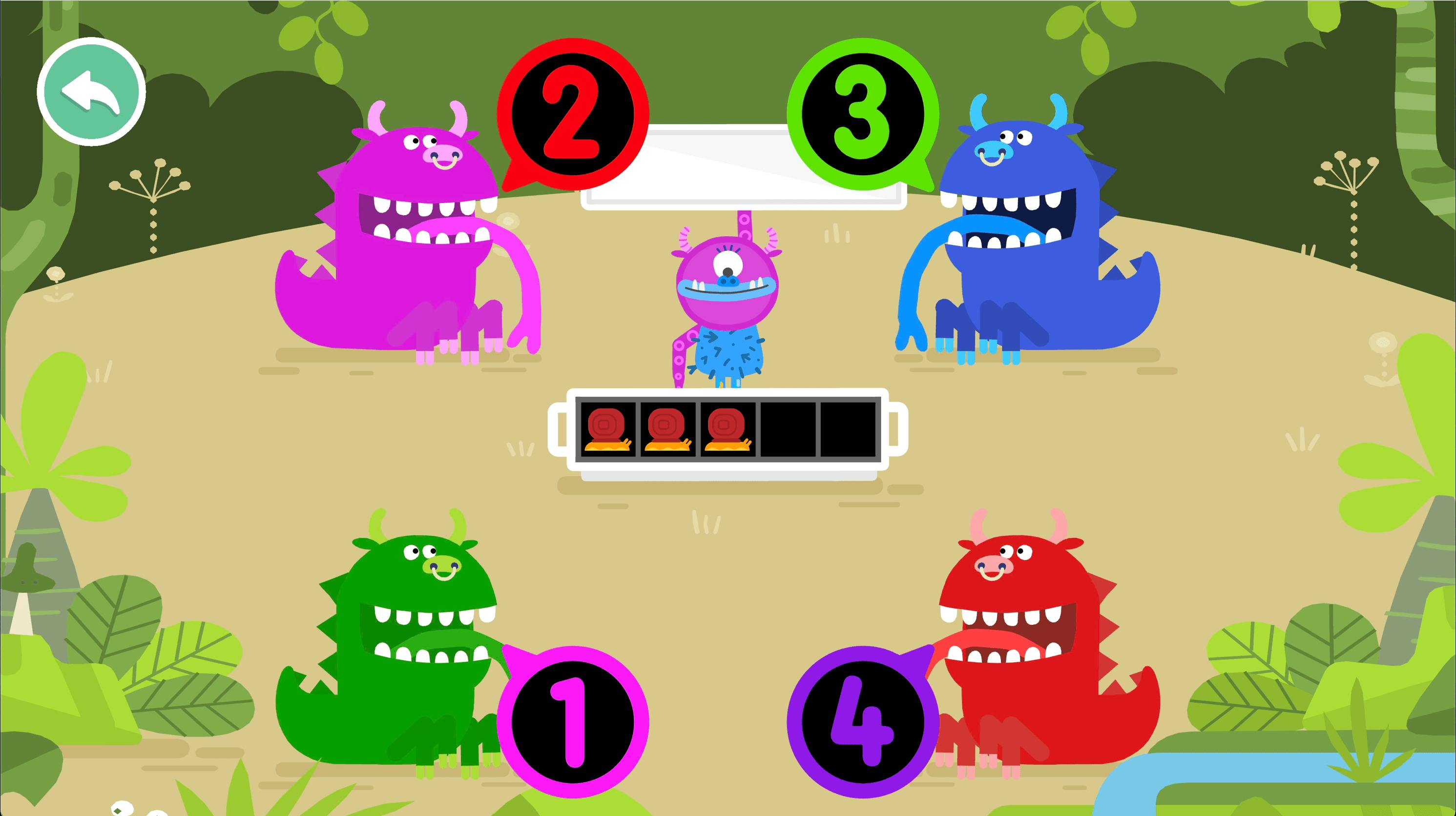
How Teach Your Monster Number Skills Helps With New Math
Games such as Teach Your Monster Number Skills are designed using the same principles of modern Math teaching and are a great way to help both you and your child understand mathematical concepts:
- Helps children practice important mathematical skills and concepts such as number bonds and subitizing using visual manipulatives
- Uses graphics, animation and voice-over to overcome challenges faced by learners who struggle with reading comprehension
- Reduces ‘math anxiety’ through encouraging language which reinforces positive learning techniques
- Helps children and parents learn concepts together, making homework and later learning easier to understand
- Consolidates and compounds school learning through repetition at home
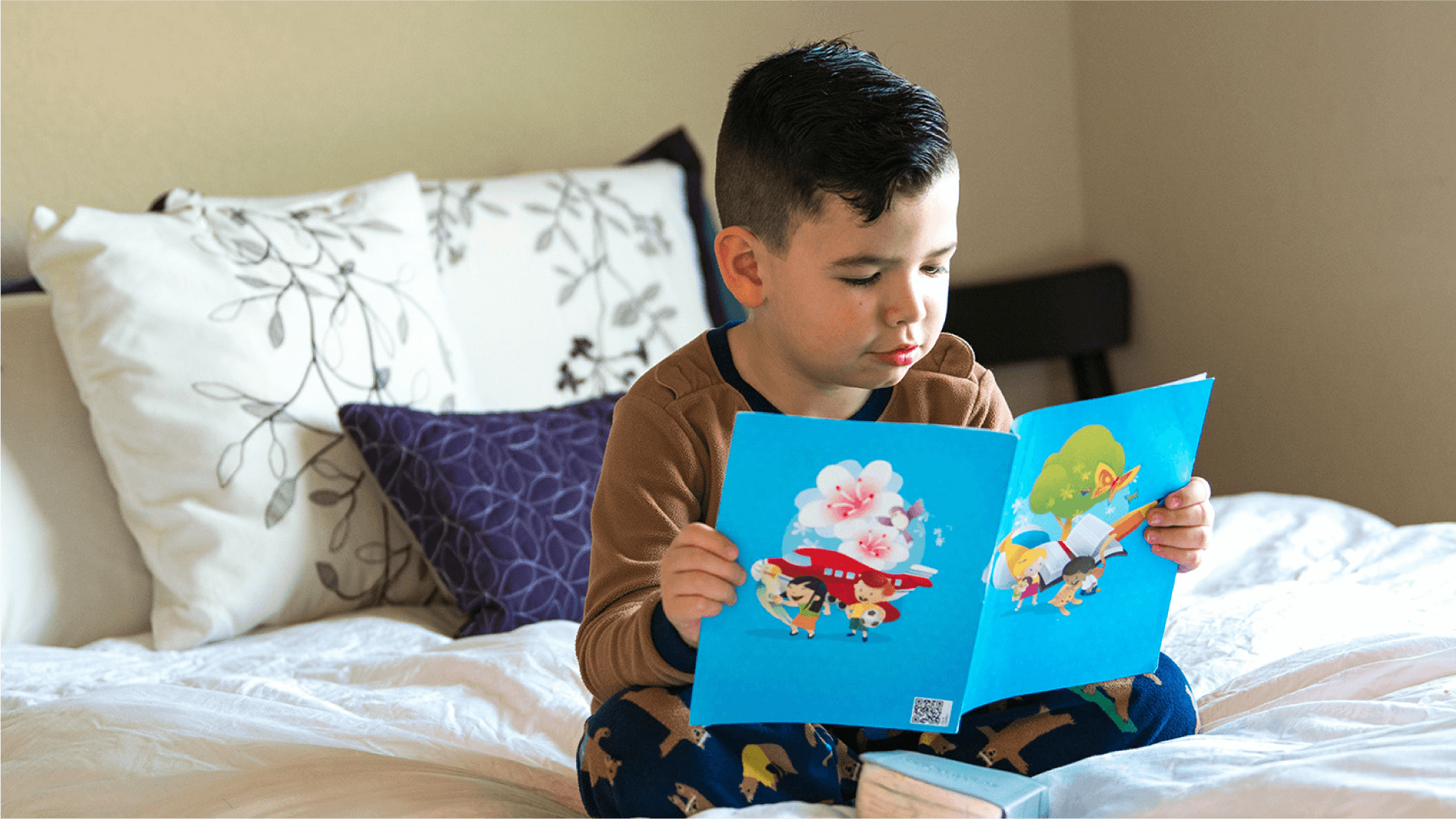
Guiding a child through their early educational needs can be a fun filled adventure, especially when fostering a love for reading. For parents and educators, understanding the role of reading for pleasure in 3 to 6 years olds is crucial. We explore the benefits, offer practical parenting tips, and introduce tools and games from Teach Your Monster (and others) that can significantly enhance the reading experience for kids.
The Magic of Reading for Pleasure
Let’s start with a question — why does early years reading actually matter? Well it’s not just about decoding words on a page, it's about opening doors to new worlds, sparking imagination, and building essential social skills. It's a vital component of literacy development, enhancing vocabulary, comprehension, and communication skills.
Boosting Confidence Through Literacy
Recognising letters, understanding phonics, and starting to read small words are significant early milestones for kids aged 3 to 6 years. Books and educational apps especially designed for early readers, like Teach Your Monster to Read or Reading for Fun, make learning these skills fun, immersive and interactive.
Building a child's confidence is an important stepping stone to building more advanced literacy skills. The more children engage with books (or reading in general!), the more their reading confidence grows. They start to recognise words, get their imagination going, start predicting where the story might go, and make lasting connections with characters they encounter.

Parenting Tips: Fostering a Reading Habit
- Storytelling Time: Make reading a daily ritual! Whether it's a bedtime story or a mid-day reading break, consistent exposure to books is key. The parents at Teach Your Monster love a reverse bedtime story, where their kid reads the bedtime story to them - why not try this at home?
- Interactive Reading: Use books and apps that are interactive and age-appropriate. Unsurprisingly we recommend Teach Your Monster Reading for Fun as an excellent example of an app that combines learning with play!
- Choose Engaging Books: Select books with rich vibrant illustrations and engrossing stories that play into your child's interests.
- Read Aloud: Reading aloud helps children understand the rhythm and melody of language, making any reading experience more enjoyable.
The Role of Educational Apps
Educational apps for kids can now play a significant role in literacy development. Apps like Teach Your Monster to Read take learning phonics and reading skills and turn them into an exciting rewarding adventure. They can offer a more personalised learning experience, making them a valuable tool for parents and educators alike.
One of our favourite UK teachers, Adam (Abbott Alphege Academy, 2023) says “Teach Your Monster Reading for Fun is absolutely fantastic in ensuring that children maintain a passion for reading and they are exposed to a wide range of texts. It’s engaging, it’s fun and it crosses the world of technology with the world of books and today, that’s really important, to bring those two together.”
The life-long journey of reading for pleasure in early childhood is more than just an educational milestone — it's the beginning of a lifelong love for books. By incorporating even just a few of these tips into a routine, parents and educators can help children become confident, and hopefully even enthusiastic readers!

Do you know what subitising is? In the world of early mathematics education, subitising has become a pivotal skill, crucial for developing a strong number foundation in 3 to 6 year olds. But what is it? Subitising as a concept that might seem complex, but is actually a simple and fundamental concept in early numeracy. Below we aim to demystify subitising, highlighting its importance through expert insights and practical tips for parents and educators.
What is subitising?
Subitising, as defined by math education experts, is the ability to 'instantly see how many' or framed another way to know the number of objects in a small group without counting them individually, (no finger counting or other aids!)
Here’s an example. On a table there’s two groups of blocks, one with 2 yellow blocks and one with 3 red ones.

How many in total are there? Using conceptual subitising, you can recognise, without counting the individual blocks, the whole quantity as 5 by by perceptually subitising two smaller quantities.
Bernie Westacott, renowned math expert (and Teach Your Monster consultant), emphasises the significance of subitising in early education: "subitising is not just about recognizing numbers at a glance; it's about understanding and visualising number relationships,"
Why is subitising important?
It helps form a solid foundation for complex mathematical concepts. As Bernie notes, "Subitising lays the groundwork for more advanced mathematical thinking, including addition and subtraction." Essentially it's the stepping stone to understanding bigger numbers and mathematical operations.
Regular subitising activities can enhance a child’s numerical fluency, making them more comfortable and confident with numbers.
Subitising aids cognitive development, improving memory, attention, and logical thinking, essential for problem-solving.

Incorporating subitising into daily learning
Here are a few practical tips to incorporate subitising in your day to day activities.
Educational Apps. Games like Teach Your Monster Number Skills are an excellent way to integrate subitising into children's playtime through engaging, fun activities that reinforce number recognition and relationships.
Everyday Activities. Simple household items can become tools for subitising practice. Using items like buttons, fruits, or toys can make learning more tangible and relatable.
Storytelling and Visual Aids. Incorporating stories and props can make the abstract concept of numbers more concrete and understandable for young minds. Questions like ‘How many’ are very useful for this. Why not have a toy party, where toys come and go and your kid needs to subitise how many are there?

Expert Tips for Parents and Educators
Engage in Playful Learning. Integrating subitising into games and playful activities. As Bernie Westacott suggests, "Make learning a joyful and engaging experience."
Connect with Real-life Examples. Applying subitising to everyday situations to help children understand the relevance of math in their daily lives.
Foster Collaborative Learning. Group activities encourage children to learn from and with each other, enhancing their social and cognitive skills.
Subitising is such an important step to a deeper understanding and appreciation of numbers in the young mind and it doesn’t take much to start embedding subitising in children's daily activities and play. We hope these tips help!
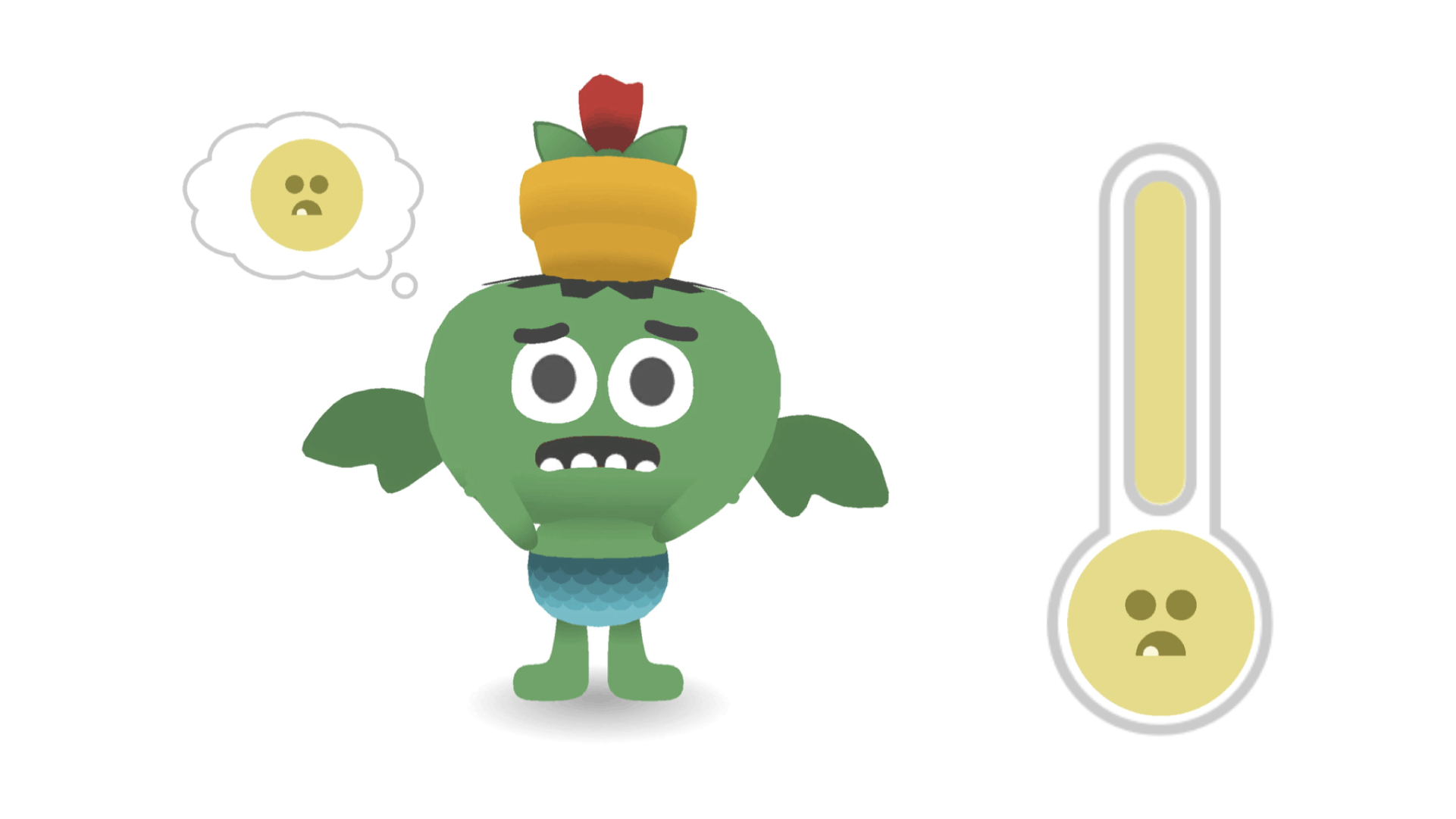
For parents and teachers of 3 to 6 year olds, understanding and managing anxiety is one of the many challenges we face. For children this age it’s not just about learning ABCs and 123s — it's also when children develop emotional intelligence. Anxiety, worry and fears are common, but often misunderstood aspects of child development.
Understanding Anxiety in Young Children
Anxiety in children can manifest differently compared to adults. For a 3 to 6 year-old, anxiety might appear as fear of the dark, separation anxiety, or worries about new experiences. It's a natural part of growing up. However, it becomes a concern when it interferes with their daily activities or development.
Key Signs of Anxiety in Children:
- Excessive worry about routine activities
- Reluctance to engage in social interactions
- Persistent fear or avoidance of specific situations
- Physical symptoms like headaches or stomach aches
- Sleep disturbances
Some things that could help with children’s anxiety:
- Create a Safe and Supportive Environment. Reassuring children that they are safe can help ease their worries. An environment where feelings are acknowledged and discussed openly can significantly reduce anxiety levels.
- Encourage Expression of Feelings. Using age-appropriate language to encourage a child to express their fears and worries can help them understand and manage their emotions better.
- Establish Routines. Consistent daily routines provide a sense of security and predictability, which can alleviate anxiety.
- Model Positive Behaviour. Children often imitate their parents. Displaying calm and confident behaviour in situations that trigger your child’s anxiety can teach them how to react appropriately.
- Positive Reinforcement. Praising and rewarding children for facing their fears can boost their confidence and reduce anxiety over time.
Educational Apps for Kids: A Modern Approach to Anxiety
Educational apps have become valuable tools in addressing childhood anxiety. These apps can offer engaging ways for children to learn about emotions and coping strategies.
- Teach Your Monster Feelings (Tiny Demo). We’ve developed a brand new conceptual demo for a game centred around recognising and managing worry. The game encourages kids to take care of their monster. Using exciting new inventions (a Feelings Scanner and Feelings Meter), children can have fun working out what their monster is feeling and helping their monster ease their worry. We hope to turn it into a full game at some point, so any feedback will help us learn and grow on this small slice of gameplay!
- Mindful Powers. This app focuses on mindfulness for kids, teaching them how to focus their thoughts and calm their minds, which is beneficial in managing anxiety.
- Breathe, Think, Do with Sesame. A great app for younger kids, it helps them learn to calm down and solve everyday challenges, teaching skills to deal with anxiety.
- Positive Penguins. This app is designed to help children understand why they feel the way they do and how to shift negative thinking patterns.
By recognising the signs of anxiety, creating a supportive environment, and using tools like games or books, you can help your child navigate their emotions effectively. Remember, every child is unique, and what works for one may not work for another. It’s about finding the right balance and approach for your child!
Here are some printable resources about feelings available for free…
If you’re looking for books about feelings, here’s our Teach Your Monster favourites!
Ruby’s Worry: A Big Bright Feelings Book, Tom Percival, Bloomsbury Publishing
How Are You Feeling Today? Molly Potter, Bloomsbury Publishing
The Colour Monster and The Colour Monster Pop-Up, Anna Llenas, Templar Publishing
All About Feelings, Felicity Brooks, Usborne Publishing
Ravi's Roar: A Big Bright Feelings Book, Tom Percival, Bloomsbury Publishing
(2 minute read)
In the realm of education policy in the United Kingdom, the Labour Party and the Conservative Party often find themselves at odds over various issues, and one such area of contention is the teaching of mathematics. Labour has proposed a policy to introduce maths education at a younger age, while the Conservative Party advocates for extending compulsory maths education for 16-year-olds by two more years. In this article, we will delve into why Labour's approach of teaching maths at a younger age is superior to the Conservative Party's proposal of extending compulsory maths education.

1. Early Development of Fundamental Skills
Labour's policy to introduce maths education at a younger age recognises the importance of building a strong foundation in mathematics during the early years of a child's education. Research has consistently shown that early exposure to math concepts enhances cognitive development and problem-solving skills. By starting math education at a younger age, children can gradually develop their mathematical skills, ensuring they have a solid grasp of fundamental concepts before they reach secondary school.
2. Reducing Math Anxiety
One of the key benefits of starting maths education early is that it can help reduce math anxiety, a common issue among students. When children are introduced to mathematics in a nurturing and age-appropriate manner, they are less likely to develop a fear of the subject. In contrast, the Conservative Party's proposal to extend compulsory maths education for 16-year-olds may exacerbate math anxiety by forcing students who may already be disinterested or struggling with the subject to continue studying it against their will.
3. Improved Long-Term Academic Outcomes
Labour's policy aligns with research indicating that early math education contributes to better long-term academic outcomes. Early exposure to mathematical concepts has been linked to improved performance in mathematics throughout a student's academic journey. By starting at a younger age, students are more likely to excel in mathematics in later years, leading to higher attainment levels and better career opportunities.
4. Flexibility and Individual Choice
Labour's approach promotes flexibility in the education system, allowing students to choose when they want to engage in advanced mathematics. It recognises that not all students are equally inclined towards math, and some may have different career aspirations that do not require advanced mathematical skills. This approach empowers students to make informed choices about their education path, promoting a more personalised and student-centered learning experience.
5. Addressing Teacher Workload
Implementing the Conservative Party's proposal to extend compulsory maths education for 16-year-olds would put additional pressure on teachers, who are already grappling with heavy workloads. Labour's policy, on the other hand, provides teachers with the opportunity to introduce mathematics in a less rushed and more developmentally appropriate manner, reducing the burden on educators.
In the ongoing debate between the Labour Party and the Conservative Party over mathematics education in the UK, it is clear that Labour's policy of teaching maths at a younger age holds several advantages over the Conservative Party's proposal to extend compulsory maths education for 16-year-olds. Early math education promotes better foundational skills, reduces math anxiety, leads to improved academic outcomes, and provides greater flexibility for students. By focusing on the developmental needs of students and recognising the diversity of their interests and abilities, Labour's approach offers a more balanced and effective approach to mathematics education in the United Kingdom.
(3 minute read)
Some children appear to ‘magically’ pick up reading where others struggle, especially those with learning difficulties such as dyslexia. So how can we create a strong reading foundation for ALL kids?
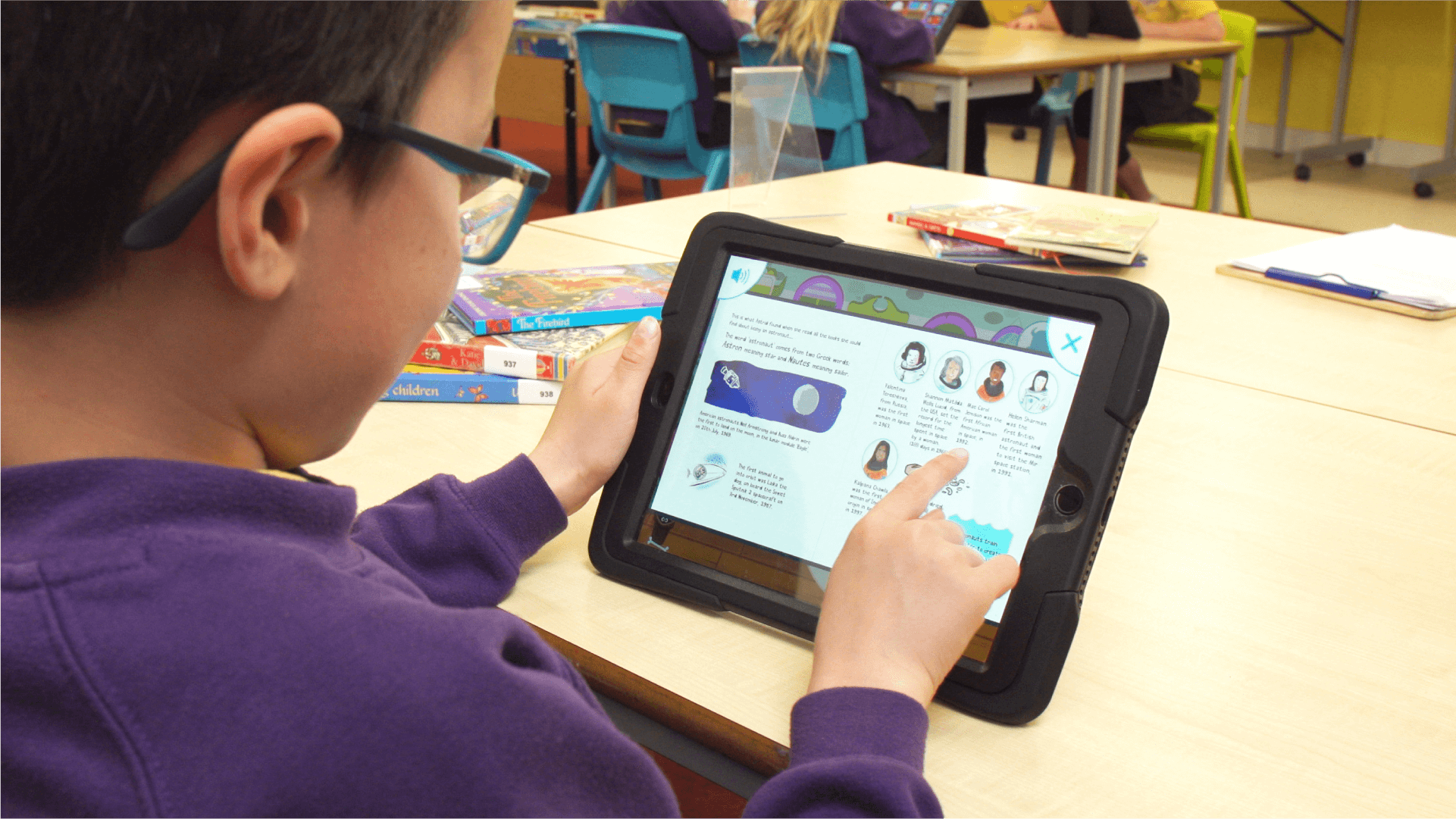
Peter Usborne CBE, the founder of Usborne books and Teach Your Monster, believed that a solid foundation in reading is essential for children to grow into healthy adults. His career was dedicated to helping children develop their reading skills and improving access to reading. These principles led to the creation of our very first game, ‘Teach Your Monster to Read’. Key to its development was understanding the science behind how children learn to read.
Researchers and educators have worked for decades to understand the processes that underpin reading. This extensive body of work includes everything from studies on the long-term efficacy of reading instruction methods and interventions, to patterns discovered from brain scans in cutting-edge neuroscience research labs.
The modern ‘Science of Reading’ movement emerged from this foundation of evidence-based learning research. Today’s teachers, parents, and reading experts understand the importance of phonics, decoding and comprehension to improve reading outcomes for every student.
Successful early interventions can start with these building blocks of reading:
Phonemic Awareness: This is the ability to recognize and manipulate individual sounds (phonemes) in spoken words.
Phonics: To comprehend text, children must first understand the relationships between sounds (phonemes) and the written letters that represent them (graphemes). “Decoding” – matching letters to sounds – is what we mean by ‘phonics’.
Vocabulary: A rich vocabulary is crucial for comprehension. Children need to learn and understand the meanings of words to make sense of what they are reading.
Fluency: Fluency involves reading smoothly, accurately, and at an appropriate rate. Fluent readers can focus on comprehension rather than struggling with decoding.
Comprehension: Comprehension is the ultimate goal of reading. It's the ability to understand and make meaning from text. Effective comprehension strategies include making connections, asking questions, and summarizing.
In most UK schools, children are actively taught phonics from an early age. The method is catching on in American Schools as well. (I’m sure that class teachers would be happy to share the systems they use to teach phonics with keen parents!) Many teachers use our Teach Your Monster to Read game in their class because it was designed to help kids practice the foundational skills of phonics and phonemic awareness.
Parents can also support early reading development at home to build understanding and contribute to their child’s success. Here are some key takeaways from the research:
Start Early: Reading aloud to infants and toddlers promotes language development and can help spark an interest in reading.
Create a Literacy-Rich Environment: Surround children with books, magazines, and other reading materials. Encourage reading for pleasure to help it become a part of daily life.
Model Reading: Children are more likely to become readers when they see adults and siblings enjoying books. Be a reading role model.
Tailor Instruction: Recognize that each child is unique and may progress at their own pace. Provide support and help when needed.
Stay Informed: Keep an eye on the latest research and best practices in reading instruction. This knowledge can inform teaching methods and strategies.
The science of reading isn’t fixed — it is constantly updating and uncovering new insights into how children learn to read. But by studying and understanding the processes involved in reading and applying evidence-based strategies, we can empower children to become confident readers. Reading is not just a skill; it's a gateway to knowledge, imagination, and lifelong learning.
References
APnews - An end to the reading wars? More US schools embrace phonics
PBS - Why more U.S. schools are embracing a new ‘science of reading’
(4 minute read)
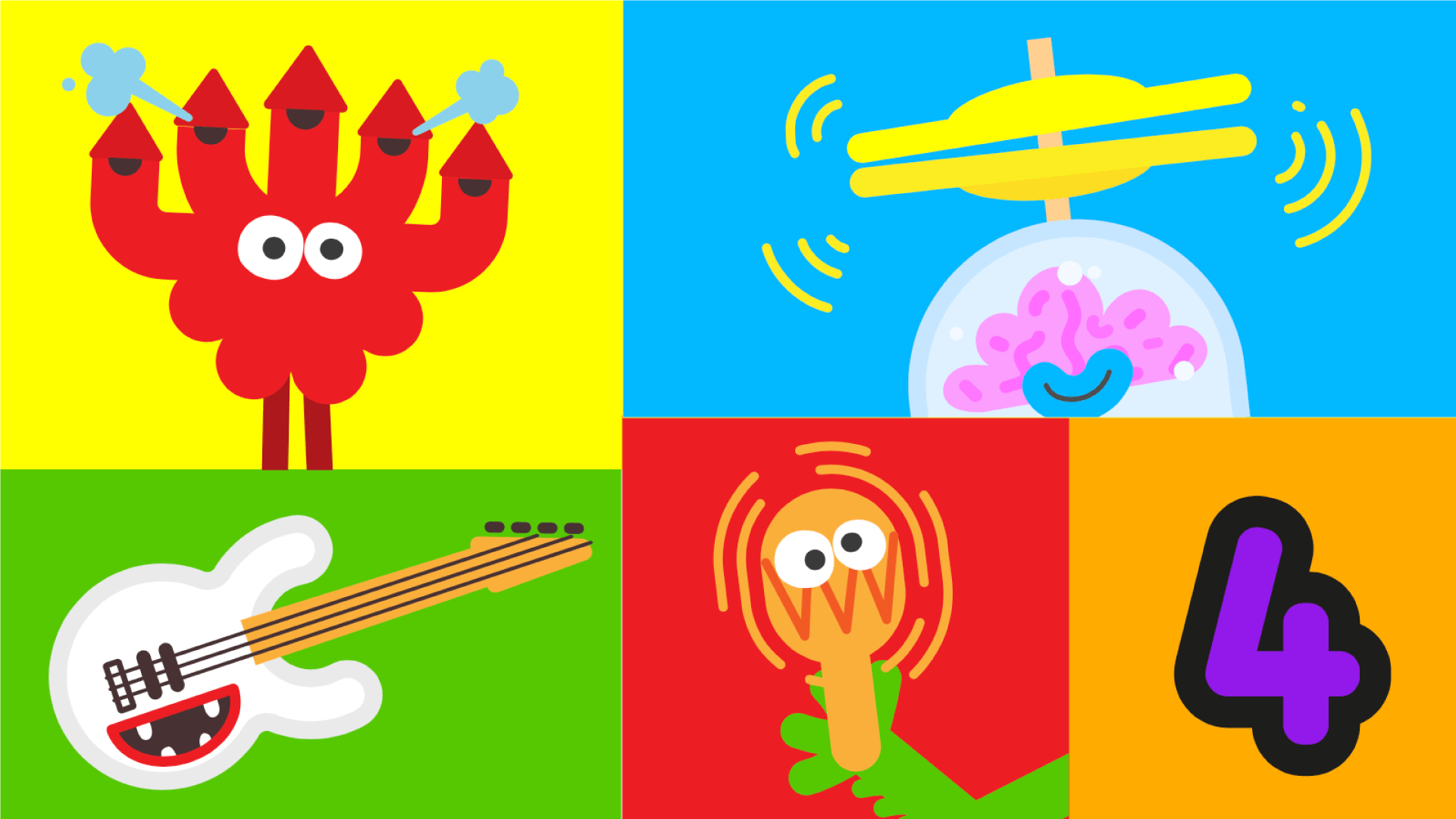
“Time for a music break!” As a primary school teacher, I used to love sticking on an educational song in my lessons, both as part of the learning process AND as a useful brain break if my pupils started to get restless. Quick and easy to implement, songs are super engaging, super fun and help promote memorization for young kids. I think we all remember ‘baby shark’ being stuck in our brains as a permanent earworm since 2015…
You may think of music and mathematics as unlikely partners but did you know that songs and musical experiences actually play a significant role in enhancing children's math and number skills? The impact of music in the field of mathematics is a subject that is gaining increasing attention. Let’s take a look at why.
The Rhythm of Learning
Music is often described as a universal language, and it's no wonder that it can serve as a powerful tool for teaching math concepts to children. The beats structured in rhythmic patterns, melodies, and lyrics in songs can help young learners grasp concepts in a fun and engaging way. Here are some ways in which music aids in mathematical development.
Memorization: Catchy songs with repetitive lyrics can help children memorize key mathematical facts, such as multiplication tables, addition, and subtraction.
Numerical Concepts: Music can help children understand numerical concepts like sequencing, patterns, and order. Songs that involve counting, such as "Five Little Monkeys" or "Ten in the Bed," reinforce the concept of numbers in a memorable repetitive way.
Spatial Awareness: Learning about fractions, geometry, and measurement often requires a solid understanding of spatial relationships. Music has its rhythmic beats and patterns, as well as positional thinking with low, middle and high notes. These help children develop spatial awareness or reasoning which has been linked to better mathematical understanding. Check out this Boogie Mites video for more on this.
Problem-Solving Skills: Music encourages problem-solving as children try to match rhythms, melodies, and lyrics. This problem-solving approach is transferable to mathematical problem-solving, where children apply their skills to real-world situations.
The Power of Catchy Tunes
Catchy songs have a unique ability to stick in our minds — the earworm effect — with melodies that are hard to forget. When applied to mathematics, this effect can be a powerful tool for enhancing children's number skills. Here's how a catchy tune works to benefit mathematical learning.
Engagement: Catchy songs capture children's attention and keep them engaged in the learning process. The excitement and enjoyment they experience while singing along to their favourite tunes make them more receptive to mathematical concepts.
Retention: Melodies and catchy lyrics are easier to remember than dry mathematical equations. Children can recall mathematical facts more readily when they are set to music, facilitating long-term retention.
Confidence Building: Success in singing along to a song can boost a child's self-confidence, making them more willing to tackle math problems and exercises.
Real-World Applications
The integration of music into mathematics education is not just theoretical — it has practical applications in the classroom and at home:
Math Apps and Games: Educational apps and games that combine mathematics with catchy songs and interactive elements are becoming increasingly popular. They provide an engaging way for children to practice math skills. Check out our math game Teach Your Monster Number Skills!
DIY Math Songs: Parents and educators can create their own math songs tailored to specific topics or skills that children need to develop. Personalized songs can make learning even more enjoyable and effective.
The relationship between music and mathematics is a harmonious one, benefiting children's development of their foundational number skills. Catchy songs and musical experiences provide an enjoyable avenue for children to explore mathematical concepts, from basic counting to more advanced problem-solving. Here at Teach Your Monster, we love this concept and after lots of research and development…drumroll please… we have just added 3 NUMBER SONGS to Teach Your Monster Number Skills! We can’t wait for these catchy tunes to help kids memorise their numbers (sorry in advance - these are definite earworms!)
Here is a list of our top 7 math songs for you to play at home!
- Counting to 5 - Teach Your Monster Number Skills
- Counting to 10 - Teach Your Monster Number Skills
- Number bonds to 10 - Teach Your Monster Number Skills
- Pattern learning - Go Noodle
- Count to 3 - Go Noodle
- Subitizing - Harry Kindergarten Music
- Count to and back from 10 - Gracie’s Corner
So, let the music play, and watch as it helps children dance their way to mathematical success!
Kay Leathers, Ex-Primary School Teacher and Contributor at Teach Your Monster.
Boogie Mites
(3 minute read)
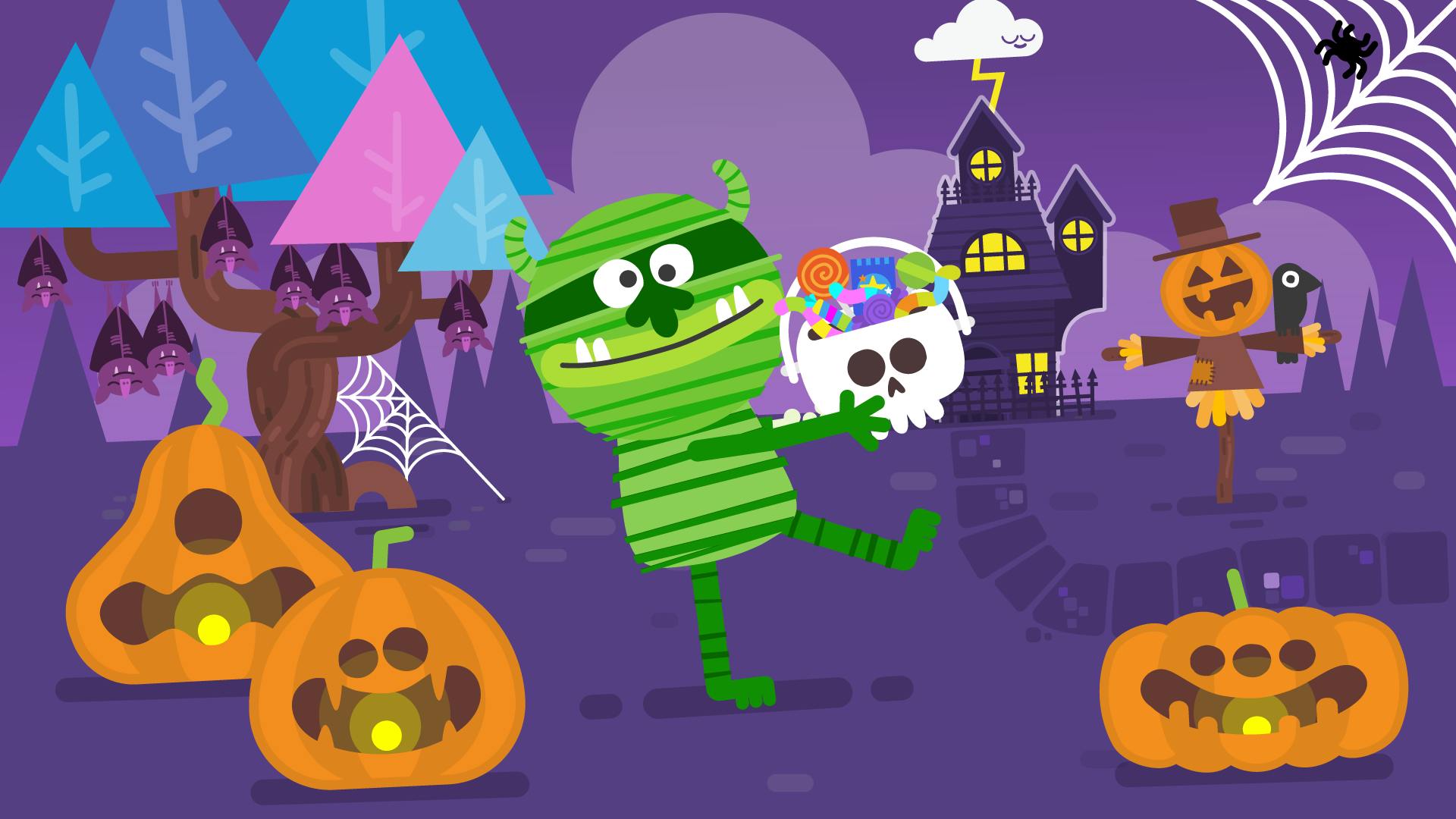
When I was eight, I stole my brother’s book about scary mythological creatures. It was like an encyclopedia of all scary things; vampires waiting at your windows, ghost heads dripping blood through the floorboards, sirens calling innocent sailors to crash on the rocks so they could devour them… It terrified me… but I loved this book! I pawed at its pages every night, taking in all the weird and wonderful tales. I remember each page vividly and the stories have stuck with me ever since…
Moral lessons, friendly characters, and happily-ever-after endings are what we often think about first when thinking about children’s stories. They provide comfort, reassurance, and a sense of stability for young readers and they have a purpose. They often teach valuable life lessons about kindness, friendship, and perseverance and show a simple world where problems are solved, and justice prevails.
However, children, like everyone else, have complex emotions and experiences that can't always be neatly packaged into sweet and safe narratives. Children can enjoy a wide spectrum of stories, including those that are dark, weird, unsettling, or even frightening! Think of the terrible weird things that happen in your favorite Roald Dahl story (George's Marvelous Medicine!), the popularity of Fungus the Bogeyman, Where the Wild Things Are, or warnings about wolves in Grandma's clothing from your favorite fairy tale.
These darker or more ambiguous stories serve a different purpose. Children are naturally curious about the world around them, and they encounter challenges, fears, and uncertainties as they grow. Darker stories often acknowledge the presence in life of feelings such as loss, fear, and adversity.
It’s true that unsettling or horrible stories may seem inappropriate for children at first glance. However, these stories, when crafted thoughtfully, can also play a valuable role in a child's literary diet. They provide an opportunity for children to confront their fears and anxieties in a controlled and comfortable setting. By experiencing these feelings through fiction, children can learn to cope with strong emotions and develop their resilience.
These stories can also serve as a vehicle for discussing challenging topics with children. They can help parents and educators start discussions on tricky topics, provide valuable lessons about empathy and social responsibility, and address issues like bullying, discrimination, and the consequences of negative actions.
Children's lives are far from one-dimensional. They experience moments of joy and sorrow, bravery and fear, love and hate. Like all of us, they grapple with the complexities of existence. They are drawn to stories that encompass the full range of human experiences. By embracing the richness of children's literature and offering a diverse array of stories, we empower children to become more compassionate, resilient, and emotionally intelligent individuals.
Whether my early experience with my brother’s book of ghosts and vampires had any long term effects, I can’t say, but (yes, we may be biased) we believe that Monsters can be fun.
We asked members of the Teach Your Monster Team for their favourite spooky, dark and weird children's books and here's what they came up with...
- Dracula: A BabyLit by Jennifer Adams and Alison Oliver
- The Stinky Cheese Man and Other Fairly Stupid Tales by Lane Smith and John Scieszka
- The Wolves in the Walls by Neil Gaiman and Dave Mc Kean
- Funnybones by Janet and Allan Ahlberg
- Meg and Mog by Helen Nicoll and Jan Pienkowski
- Haunted House by Jan Pienkowski
- Room on the Broom by Julia Donaldson and Alex Scheffer
- Nightmare Before Christmas by Tim Burton
- The Dark by Lemony Snickett and Jon Klasson
- How to Make Friends with a Ghost by Rebecca Green
And for slightly older readers the Worst Witch by Jill Murphy and the Little Vampire by Angela Summer-Bodenburg had a few fans!
Kay Leathers, Contributor at Teach Your Monster.






















